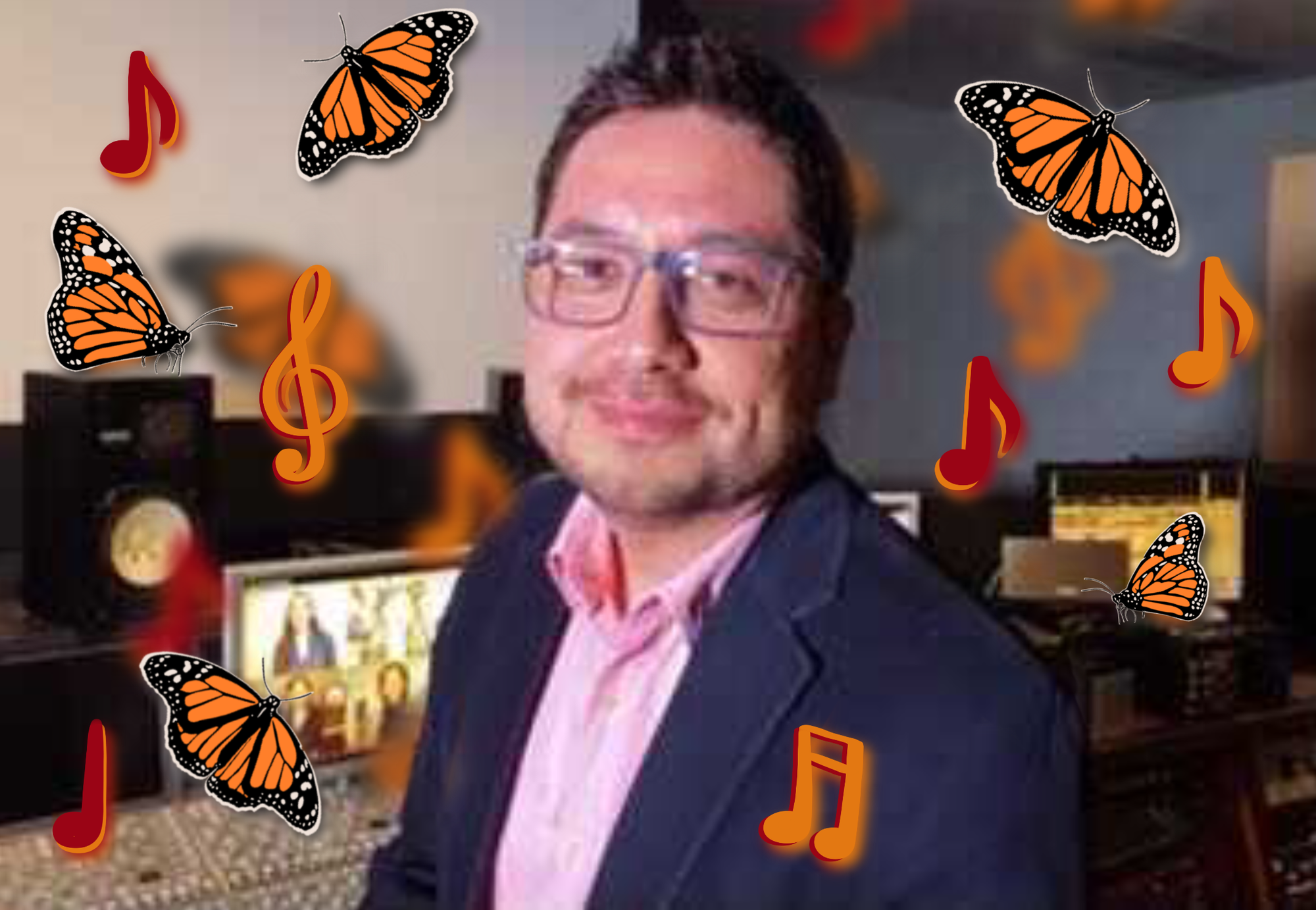Music video ‘Call Me A Dreamer’ aims to empower, unite immigrants across US

Alumnus Carlos Bravo helped co-produce the music video “Call Me A Dreamer,” which highlights the experiences of immigrants brought to the United States as children. (Photo by Daanish Bhatti/Assistant Photo editor. Photo illustration by Jaelen Cruz/Daily Bruin)
By Jordan Mula
May 6, 2021 9:08 p.m.
The Dreamers are ready to turn their hopes into a reality.
On April 16, singer and radio DJ Connie Blue-Puché released the music video “Call Me A Dreamer” in collaboration with a team of immigrants who came to the U.S. as children, some connected to UCLA. Though the group is composed of singers, conductors and musicians, they are united by the purpose of sharing Blue-Puché’s individual experience as a Dreamer in the 1970s. A Dreamer is someone who would qualify for the Development, Relief and Education for Alien Minors Act, which has never passed in Congress. Production assistant and second-year film student Dañielie Ramirez said the song is a source of empowerment for Dreamers who have had lives similar to Blue-Puché’s.
“The song pictures living in this country as a Dreamer in the ’70s,” Ramirez said. “(Blue-Puché) wrote (the piece) where it was bigger than just her experience and encapsulated the entire Dreamer’s experience so that Dreamers across the United States would be able to reunite with (her) words. The goal is to empower and uplift Dreamers.”
After being notified of the project back in January, Ramirez joined the team as a production assistant to help with filming the music video. In order to capture a sense of intimacy between the viewer and each singer, Ramirez teamed up with alumnus Carlos Bravo and opted for filming the Dreamers in the comfort of their homes. While Bravo said he is typically accustomed to working with expensive equipment, software and visual effects, he and Ramirez took a more simplistic approach.
“I saw that (the singers) felt the strongest in their homes or in front of their microphones, where they’re the safest,” Bravo said. “So I said, ‘Let’s just do a duet with iPhones or Samsung Galaxys,’ or whatever equipment they had. I just wanted to capture that.”
[Related: A cappella group Resonance wins ICCA semifinal with music video submission]
While this method of recording within homes worked for some of the singers, Bravo said others made the decision to go into the studio to improve their sound quality. Being in person together in the studio, Bravo said the team experienced a number of emotional moments with the singers who resonated deeply with the lyrics of the song, specifically when Blue-Puché writes of the “sleepless nights feeling so blue.”
Bravo said many Dreamers have found solace in hearing about Blue-Puché’s story of when she first arrived in America in her youth. At this time, Ramirez said Blue-Puché was 12 years old and the term “Dreamer” was not yet used commonly. As she grew older, the concept of being a Dreamer resonated with her, as the thought of succeeding in this country inspired Blue-Puché to keep dreaming, Bravo said.
Though the song is written by Blue-Puché, Bravo said each Dreamer on the project, whether they were an engineer, singer or producer, offered their own perspective to form the video’s organic and raw sentiment. Tiffany Del Rio, a Dreamer herself, worked on the project as a co-producer. She said she had been accepted to UCLA in 2019 but was unable to attend at the time because of her immigration status and because California had not implemented its DREAM Act. While Del Rio said she resonates with the song because of her own experience as a young immigrant in the U.S., she said the song can be relevant to anyone who has ever had a dream of their own.
“I think (the song is) also a call to action,” Del Rio said, “We have been waiting for too long and fighting this for years. Now we have the perfect opportunity because of President (Joe) Biden and Vice President (Kamala) Harris, who have been so publicly vocal in support of legislation for Dreamers.”
[Related: New PEER Lab uses sensory experiences to explore music from global perspective]
With more opportunities ahead, Bravo said he hopes more Dreamers reach out to join the movement, as this past year, the U.S. has seen young people using their voices to promote change. While the song may be interpreted in many different ways, Ramirez said Blue-Puché has referred to her music as a form of peaceful protest.
“In this age where people take to the streets with their signs and try to make powerful statements, it’s important to remember how pivotal a role music can play as a peaceful form of protest to people’s feelings and move their hearts when their minds are off,” Ramirez said.
In order to represent themselves on a national scale, Ramirez said the group has been publicizing a petition for an invitation to perform their composition at the White House to increase awareness of Dreamers who want to gain citizenship. In the meantime, Bravo said the team is currently working on a documentary following the process of how the song was completed. He said the film will delve into each of the team members’ own personal experiences of being Dreamers in the U.S.
“(Every Dreamer) has a story,” Bravo said. “They come from Pakistan, they come from Venezuela, Brazil, Singapore, the Philippines – and they’re musicians. We might end up at the White House. We might film the documentary or we might end up knocking on more doors, and this will be that uniting element. It’s helping us just spread the word.”


